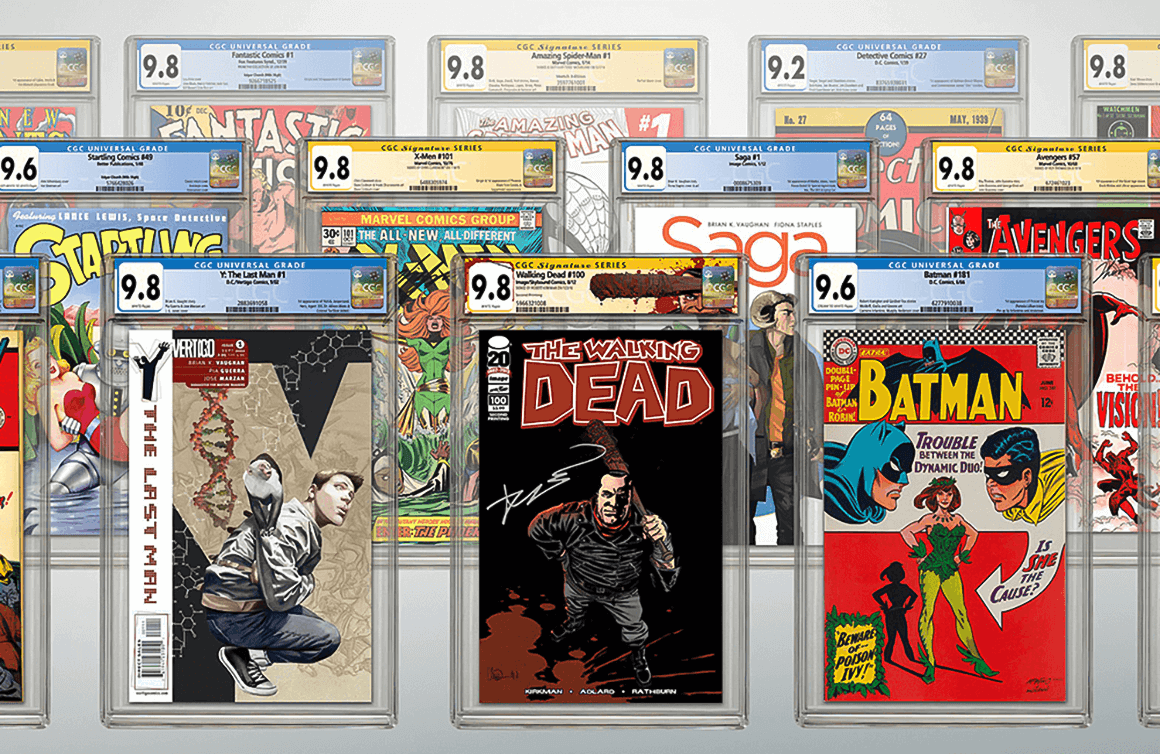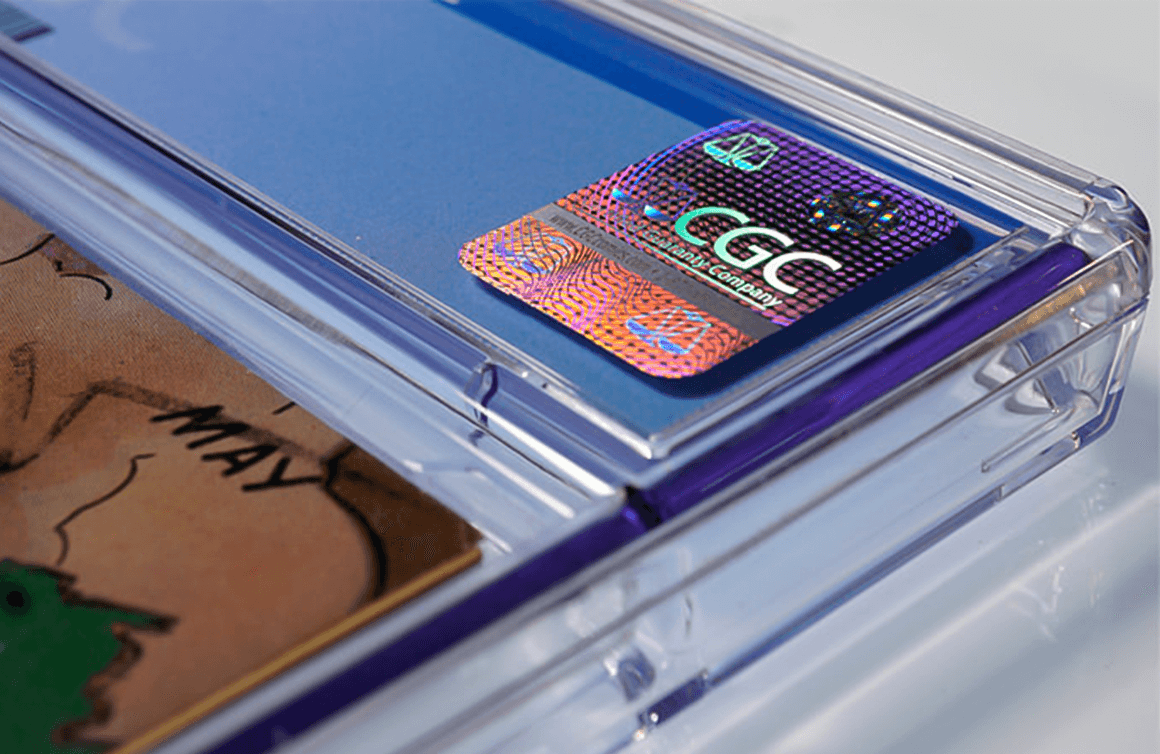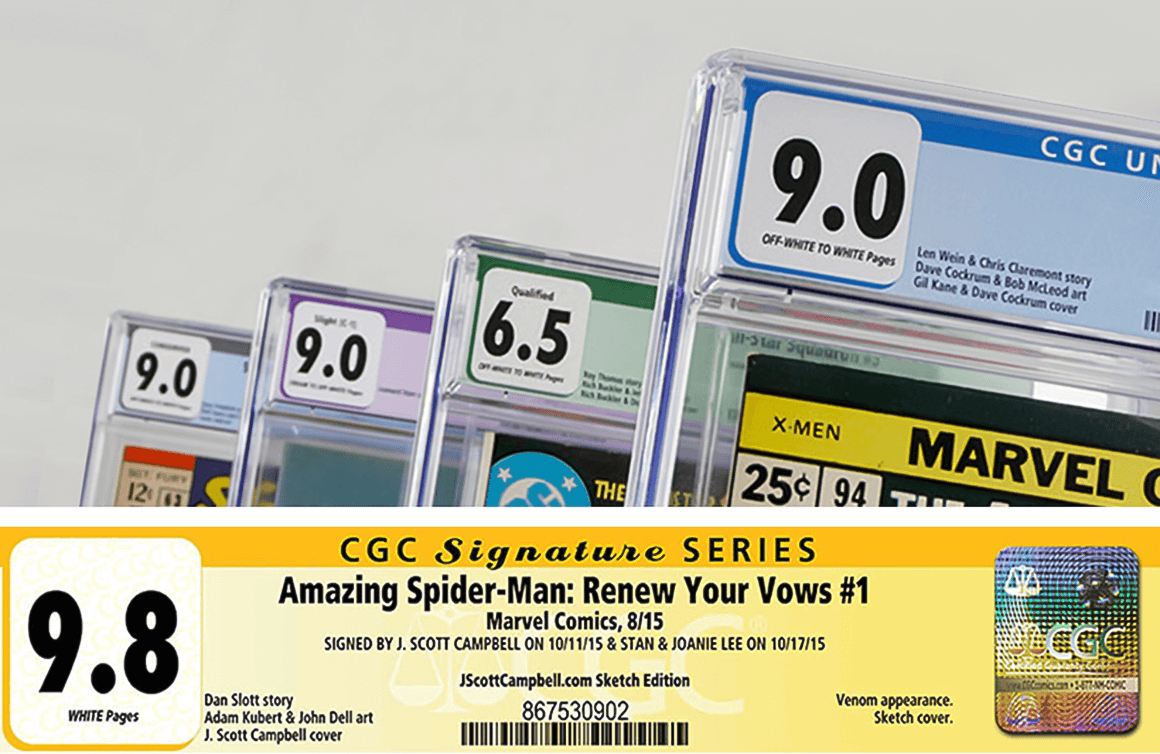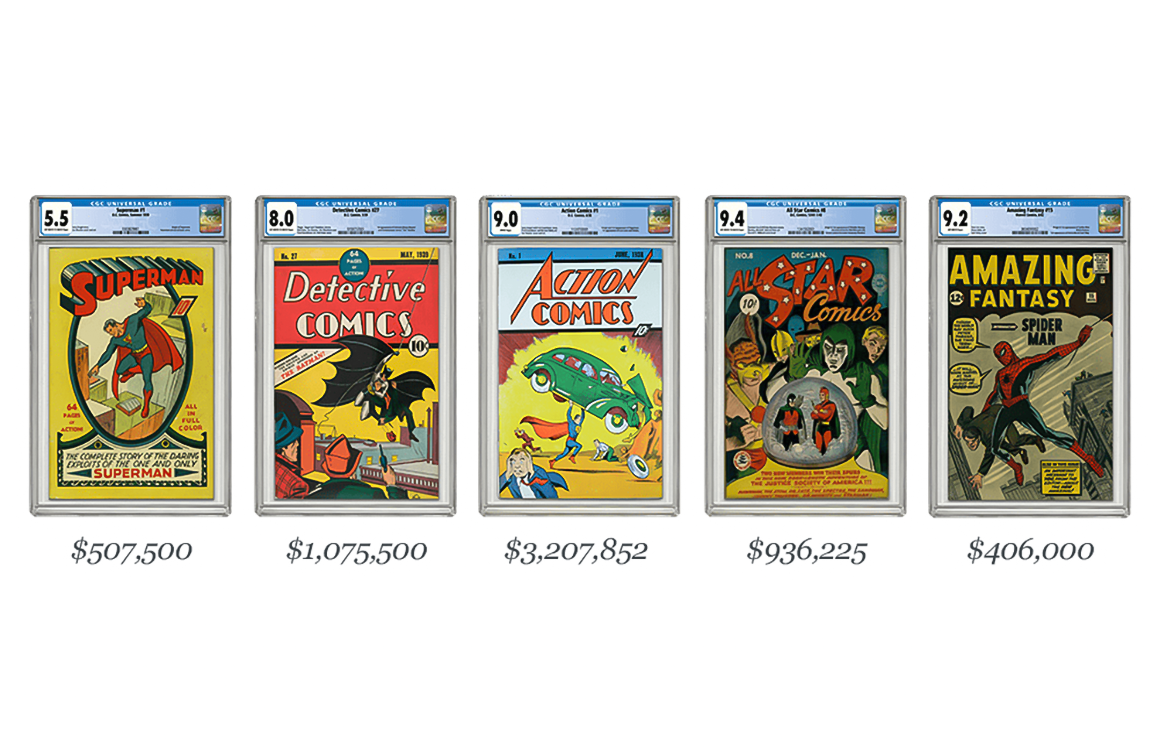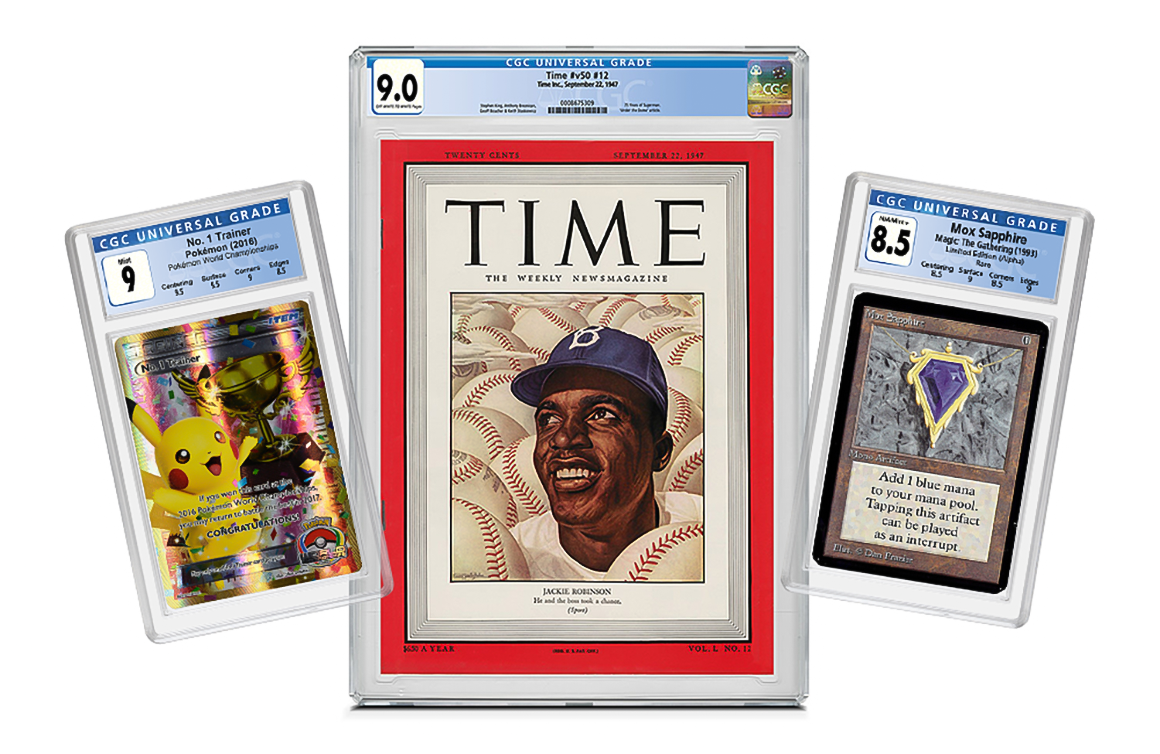Tell us about the role CGC Comics plays in the collecting industry.
Certified Guaranty Company (CGC) performs several important services for comic books that are submitted to us by collectors and dealers. The CGC team checks their condition then gives the books a grade on 10-point scale. This helps to establish how a particular comic book compares to other examples of that same book. The grade is printed on the accompanying CGC certification label, providing strong guidance on a particular book’s market value.
Collectors want to not only proudly show off their comic books but also to safely store them. CGC encapsulates each comic book in a state-of-the-art holder that serves as a crystal-clear frame. The CGC holder is archivally safe and protects the comic book during transport to and from comic conventions, auctions, occasional trips through the mail, and handling by its owner.
The holder is also tamper-proof, so neither the comic book nor the CGC certification label inside can be removed and replaced without causing obvious damage to the holder. This has helped the comic-book-collecting hobby flourish because it is much easier and safer for collectors to buy and sell comic books in genuine CGC holders.
Collectors want their comic books certified and encapsulated for many reasons, including sentimental ones. At comic conventions, CGC coordinates with collectors who want a comic book signed by their creator or artist. To provide a lasting guarantee that such a signature on the comic book is genuine, CGC offers its popular yellow Signature Series label.
The CGC website includes powerful tools that benefit collectors. The CGC Census shows the relative rarity of millions of collectibles that CGC has graded, while the CGC Registry lets members show off their collections and compete with other. These can be found at CGCcomics.com/census and CGCcomics.com/registry.

For people who aren’t familiar with grading, can you walk us through the basics of the process?
Each comic book goes through five main steps: receiving, grading, encapsulation, quality control, and shipping. Each step involves security measures that ensure the book is accounted for and correctly categorized, accurately graded, safely encapsulated, inspected for flaws and inaccuracies, and carefully packaged for return to its owner.
The process begins by removing the comic book from its shipping box under a camera. It is then given an internal number to ensure that CGC’s graders do not know whose book they are grading, which helps establish impartiality. In addition, graders are prohibited from buying and selling comic books commercially.
Each comic is carefully removed from its sleeve by the first grader, who confirms identification, performs a page count and a thorough restoration check, enters pertinent grader notes, and assigns a grade and page quality. Any fragility or other defects are noted. The last grader, called the finalizer, will assign the final grade and page quality of each comic book, conferring with other graders as necessary to reach a consensus.
Next, the comic book is encapsulated in a holder with its CGC certification label. It then undergoes a quality control process before being shipped back to its submitter.
To submit a comic book for grading, a collector must have a paid CGC membership. Three tiers are available, including one that is only $25 a year. CGC has a video guide for properly packaging a submission and sells shipping kits to make the process much easier. Once CGC receives a submission, the submitter can monitor its progress through CGC’s website.

How has comic collecting changed since the onset of the pandemic?
While collecting itself has not changed much the past year, the number of collectors entering the market has exploded. Part of this is due to people moving into tangible assets during this time of economic uncertainty, and collectibles in general becoming more accepted as investments.
For comics in particular, their extensive presence in Hollywood over the past two decades has created a huge base of fans, many of whom have gotten into collecting. The dominance of comic books in today’s pop culture continues unabated, which has expanded our collector and investor base — not just with a younger generation and also stretching out across the world.
While CGC has not been able to attend comic conventions over the past year, we have been proud to host signing events for artists at our Florida headquarters. For these events, submitters mail their books to us in order to get them signed and encapsulated with the yellow CGC Signature Label that guarantees the signature is genuine. We do look forward to returning to the comic convention circuit.

What comics stand out to you as being jewels in the CGC crown?
Over the past 20 years, CGC has had the pleasure to certify the most coveted and valuable comics in the world, including over 50 copies of Action Comics #1, the highly prized book that introduced Superman to the world in 1938. CGC has also graded comics from the most famous, high-grade collections, such as Edgar Church’s.
All of the top record-breaking sales have involved CGC-graded comics, including an Action Comics #1 that sold for $3.25 million in April, breaking the record for any comic book at auction. A few months earlier, a CGC-graded Batman #1 sold for $2.22 million, a record for any book outside of Action Comics #1.
Not only do we get to hold these comics in our hands, we also take immense pride in knowing that our brand displays and protects them, providing liquidity that makes them amazing investments.

What should people keep in mind when preserving their comics?
It goes without saying that one should always take great care when handling a comic book, regardless of its age or value. Gloves can be used when handling comics but are not necessary if hands are kept clean and dry, and free from creams and lotions. Gloves are not recommended in grading, as they reduce manual dexterity and the sense of touch.
Avoiding damage from interaction seems intuitive, but many collectors fail to acknowledge the subtle but adverse conditions that can exist in the environment where a collection is stored. Regardless of the use of sleeves, backing boards, boxes, and even CGC holders, none of it can prevent degradation if heat, humidity, light, and air are not monitored. The ideal temperature is between 64 degrees and 72 degrees Fahrenheit, and the ideal humidity level is between 45 to 60 percent. Just as important is limiting any fluctuations in temperature and humidity.
Controlling exposure to air, which contains elements that are harmful to paper, is the toughest of the four environmental threats. One way to mitigate airflow is to establish pressure by tightly stacking books in their box. But some airflow can be beneficial, as comics must be allowed to “breathe” because they continually off-gas.
Light, in general, should be avoided, as any prolonged exposure can cause oxidation and photodegradation. There should be no concern when comics are exposed to light during casual handling, organizing, or even a weekend convention, but weeks or months of constant light exposure will certainly lead to yellowing and fading.
To display comic books, special consideration should be given to the light source. Ultraviolet light (UV) is the component responsible for fading and is present in most types of lighting. Sunlight contains the highest amount of UV, followed by incandescent light, then fluorescent light. LED lights do not emit a considerable amount of UV rays, making them the best recommendation for a light source when displaying comic books.

Visit CGC Comics online to learn more about its grading service and other resources for comic book collectors.


